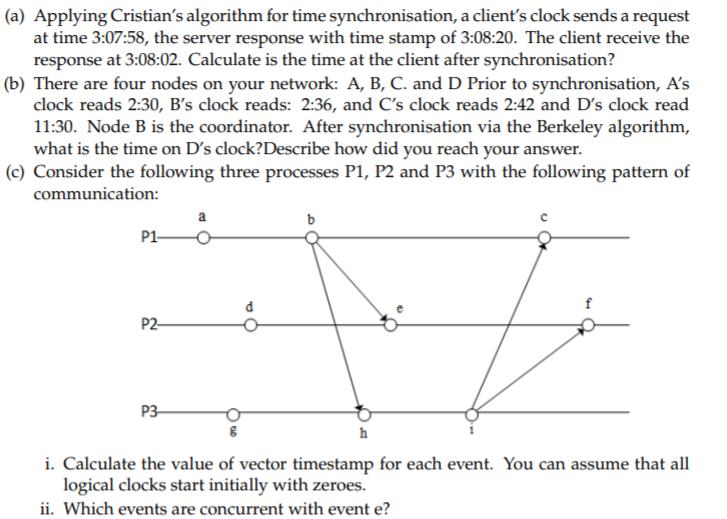Answered step by step
Verified Expert Solution
Question
1 Approved Answer
(a) Applying Cristian's algorithm for time synchronisation, a client's clock sends a request at time 3:07:58, the server response with time stamp of 3:08:20.

(a) Applying Cristian's algorithm for time synchronisation, a client's clock sends a request at time 3:07:58, the server response with time stamp of 3:08:20. The client receive the response at 3:08:02. Calculate is the time at the client after synchronisation? (b) There are four nodes on your network: A, B, C. and D Prior to synchronisation, A's clock reads 2:30, B's clock reads: 2:36, and C's clock reads 2:42 and D's clock read 11:30. Node B is the coordinator. After synchronisation via the Berkeley algorithm, what is the time on D's clock? Describe how did you reach your answer. (c) Consider the following three processes P1, P2 and P3 with the following pattern of communication: P1- P2- P3 a h i. Calculate the value of vector timestamp for each event. You can assume that all logical clocks start initially with zeroes. ii. Which events are concurrent with event e?
Step by Step Solution
★★★★★
3.46 Rating (156 Votes )
There are 3 Steps involved in it
Step: 1
Solutions Time Synchronization in Distributed Systems In a distributed system hardware and software are connected to each other and share resources wi...
Get Instant Access to Expert-Tailored Solutions
See step-by-step solutions with expert insights and AI powered tools for academic success
Step: 2

Step: 3

Ace Your Homework with AI
Get the answers you need in no time with our AI-driven, step-by-step assistance
Get Started


